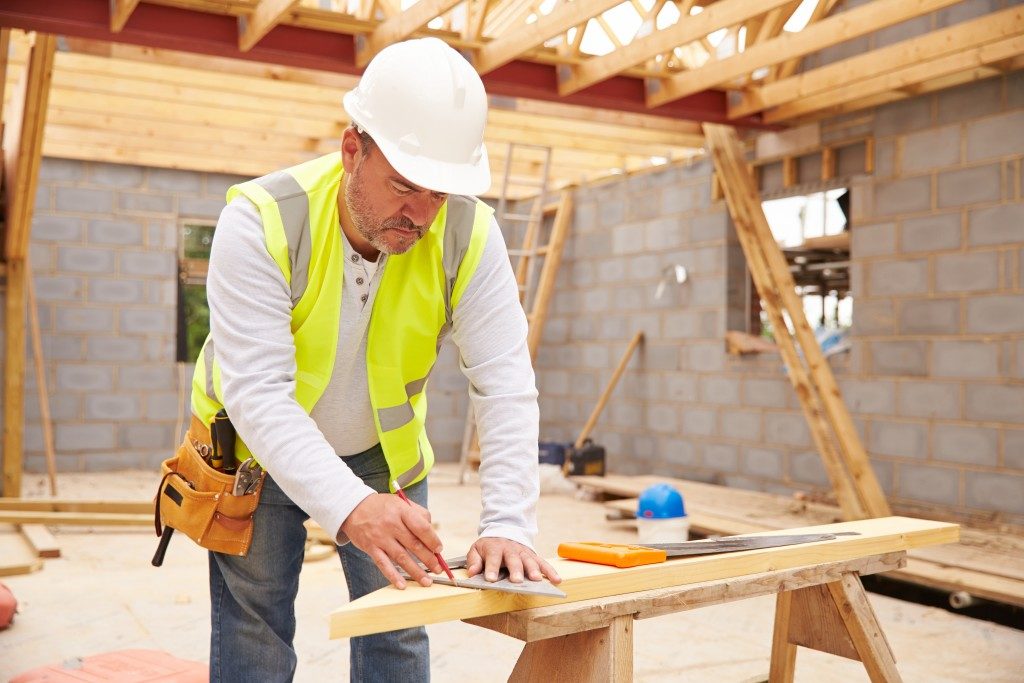Woodworking and carpentry are one of the oldest and most commonly-practised trade and has its applications from residential and commercial constructions, to the manufacturing of wood materials and furniture, and sculptures and wooden ornaments. But whether you use simple tools such as hammers and handsaws, or utilise more high-powered machinery such as woodcutters and electric table saws, there are undoubtedly risks and health hazards. As such, we’ll be taking a look at basic safety tips and precautionary measures for carpenters and woodworkers:
Safety Equipment
Regardless of the types of tools you use, it’s always important to wear proper protective personal equipment or PPEs. One of the most common injuries from working with wood is from splinters, as such, it’s important that you always use protective gloves when handling wood and tools. Investing in cut and impact resistant working gloves can allow you to freely work with wood and a plethora of woodworking tools without having to worry about cuts, splinters, or getting hit with a hammer. Next would be to use high-quality safety glasses to protect your eyes from sawdust, splinters, and other projectiles when working with wood and tools. For those using nail guns in carpentry or furniture-making, it’s best to have high-impact safety glasses. Wearing earmuffs or earplugs can help protect your eardrums from hearing damage or even hearing loss from loud noises when working with impact tools or high-powered saws. Lastly, dust and other tiny particles from cutting and shaving wood can be inhaled, so it’s just as important to work in a well-ventilated area as it is to wear a mask.
Wear Proper Clothing
Never wear loose-fitting clothes as they may get in the way of your power tools, and may even get caught up with other machinery and equipment. You should wear clothing that can cover as much skin, won’t restrict your movement, and is comfortable to work in. It’s also important to remove any dangling jewellery such as necklaces and bracelets.
Avoid Drugs and Alcohol
This is pretty much applicable in all types of work. Never work with tools when impaired as woodworking and being intoxicated are recipes for disaster. So stay away from your workplace or workshop if you’re not sober. It might be tempting to drink a few beers when working on a project, but try to keep the alcohol until after you’re done working.
Use Quality Tools and Materials

The equipment, materials, and consumables you use in woodworking and carpentry can affect not only your quality but also your safety. Poor quality or ill-maintained tools won’t be capable of doing the job properly, this goes for rusty hammers, dull saws, and rusty fasteners (wood nails and screws); poor tools and materials will inevitably result to poor output, and can potentially cause injuries due to tool or material breakage. So be sure to be meticulous when choosing a carpentry/woodworking tools and fastener supplier for your project or business in Sydney.
Check for Nails and Other Metals
When cutting pieces of wood, it’s important to inspect first if there are any nails, screws, and other metal fasteners engrained or stuck within the wood. Not only would these metal items damage your handsaw, but they can turn into very dangerous projectiles if they are run through spinning saw blades.
Conclusion
As with all trades and crafts that use tools, woodworking and carpentry have their own health hazards and risks. Fortunately, these can easily be avoided by simply following these safety tips and precautionary measures. These pointers won’t only make you safe, but allow you to create quality work and have peace of mind when working.




